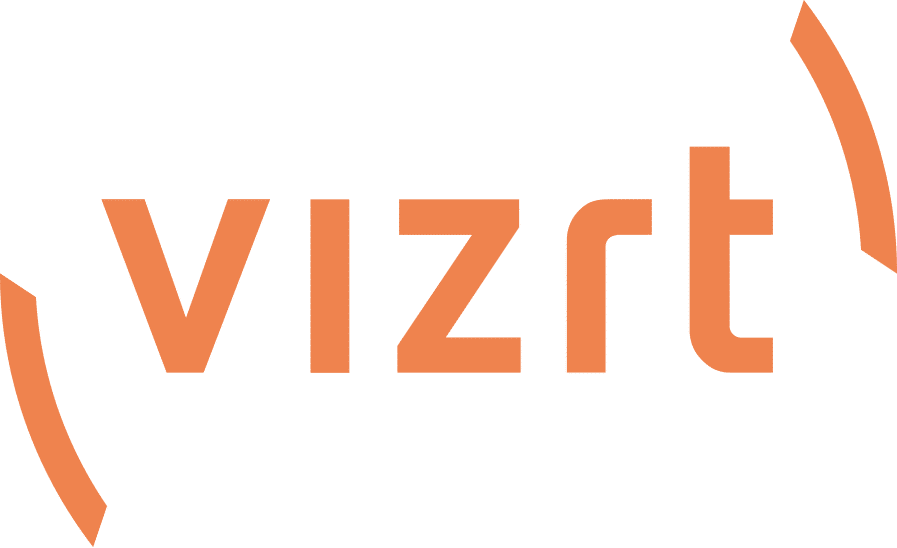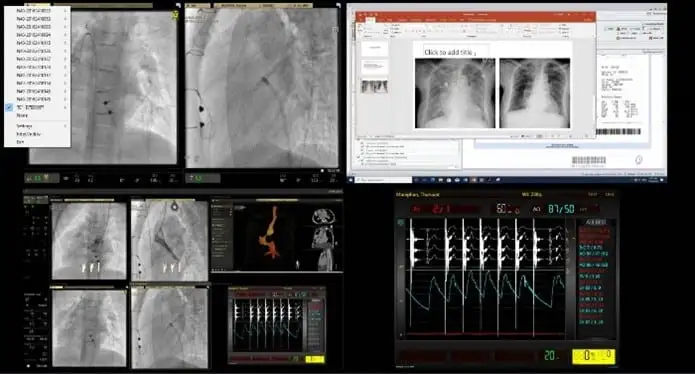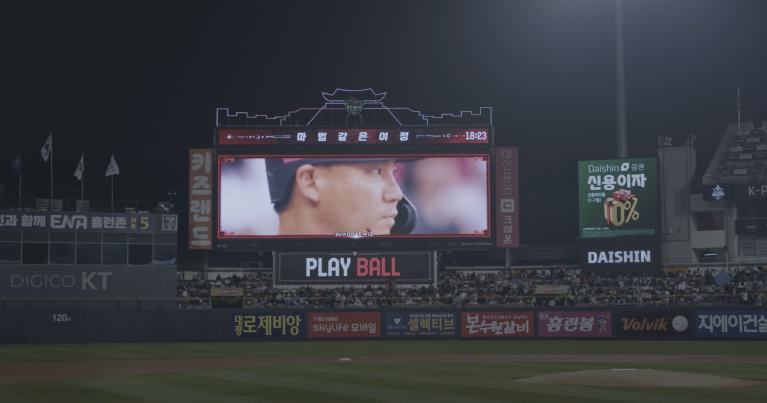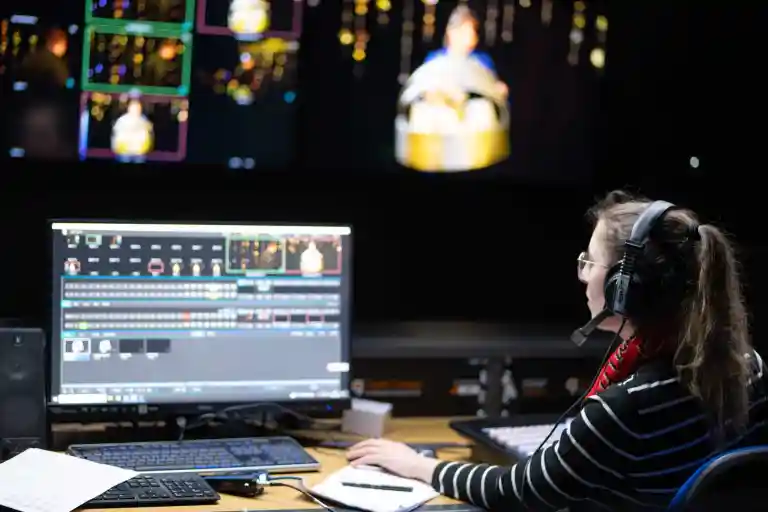“With Viz Libero we have a professional tool to prepare sports analyses in the best interest of our players and coaching staff.”
Mathias Munz
VfB Stuttgart Head of Analytics
Sports clubs need to be able to provide their athletes an edge to bring to the field. This is true of football (soccer) and tennis. Viz Libero is now being used extensively to help athletes improve their strategy and analyze every play. VfB Stuttgart is a football club within the Bundesliga, keen to use Viz Libero to gain a competitive edge, while TennisGate is working to improve its professional training options for both coaches and players.
A coach can run Viz Libero on a standard laptop with a reasonable graphics card. Once footage is imported into Viz Libero, it can be analysed and either be played out onscreen, or exported as clips to send to individual players. New perspectives can be generated by the software providing a unique view of the action. Analysis functionality includes distance measurements, players’ moves on the pitch and, in particular, automatic tracking of multiple players.
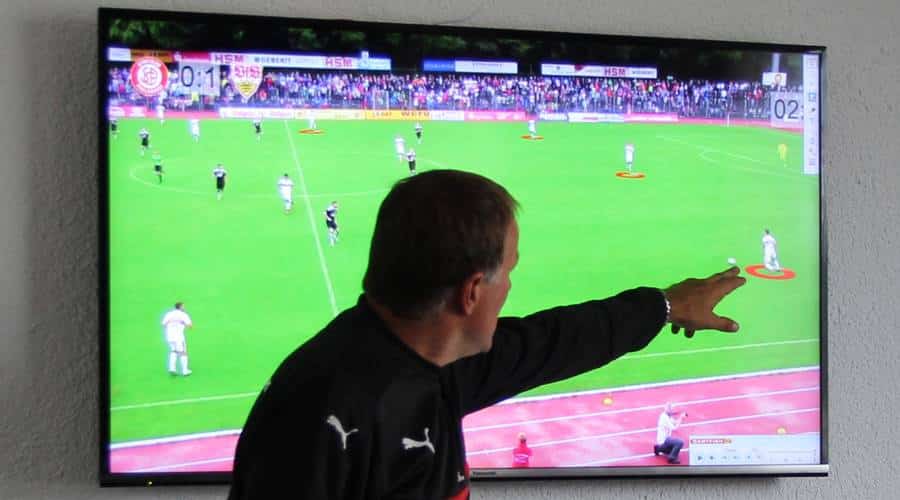
VfB Stuttgart
When VfB Stuttgart first started using Viz Libero, they were looking for a way to analyse football manoeuvres in a way that would be useful for both their coaches and their players. Most important was giving coaches and trainers the ability to easily visualize the intentions behind the players’ manoeuvres and strategies in the play recorded in videos, as well as communicate what should happen in an ‘ideal’ scenario. The team has gained this ability through Viz Libero.
“In the Bundesliga, we mainly rely on the scouting feed shots of DFL (Deutsche Fußball Liga) which these organisations capture for their records on players, tactics and matches,” Mathias Munz, VfB Stuttgart Head of Analytics, said. “We also shoot our own videos at our home games, from behind the goal. For us, it is important to have all 20 players visible at all times so both the scouting feed recordings as well as the behind the goal shots give the necessary information for subsequent analysis. We also use Viz Libero to edit videos of training sessions and our youth teams, and to analyse footage of our opponents.”

Maximising Video
The video comes from multiple sources that generally don’t afford them much control over the shooting angle or conditions. The video is typically shot with a single camera, which still allows them to create new perspectives. Additionally, Mathias believes the software’s graphics functions make the videos extremely valuable to the trainers.
He said, “With Viz Libero we have a professional tool to prepare sports analyses in the best interest of our players and coaching staff. The variety of different graphics and visual options help to highlight the intention behind the individual manoeuvres and strategies perfectly.”
“We often use the arrows, for example, to indicate areas where the ball should have gone, or where another player should have been able to reach it more effectively. Likewise, we can highlight free spaces on the field. We also take the opportunity to move individual players to a better position or to connect multiple players’ actions together.”
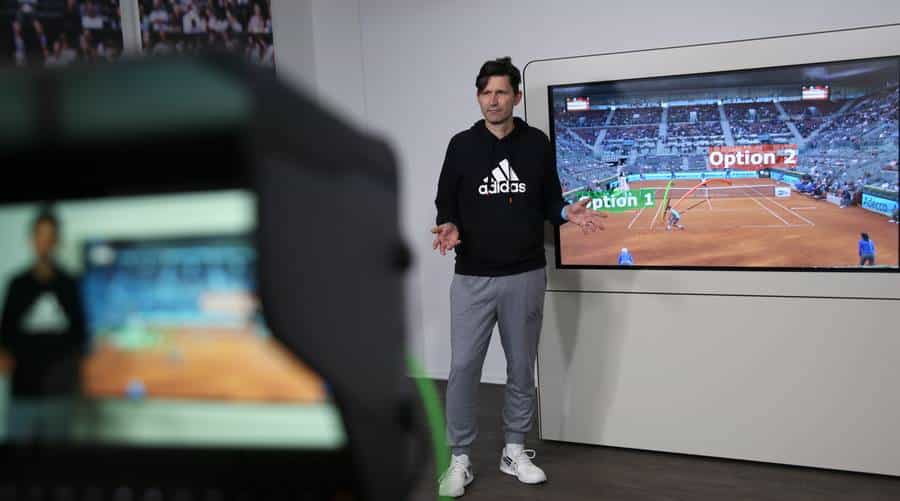
Interactive potential
VfB Stuttgart’s coaches are working with pre-recorded material, edited and annotated in advance with Viz Libero in their offices. The coaches then play the video to tell the story.
They are now looking forward to further improving the scope of their training with Vizrt’s interactive tools. “Primarily my colleagues and I have fairly conventional jobs and finish the videos in post on a laptop in the workplace,” Mathias said. “However, we also run training camps and on trips to away games and can take Viz Libero out with us to use at the location, though not interactively.
“Consequently, for some time, we’ve wanted to offer the trainer live, interactive analysis whenever he needs it. So far that hasn’t been possible due to lack of the necessary hardware but having Viz Libero makes this possible in the future.”
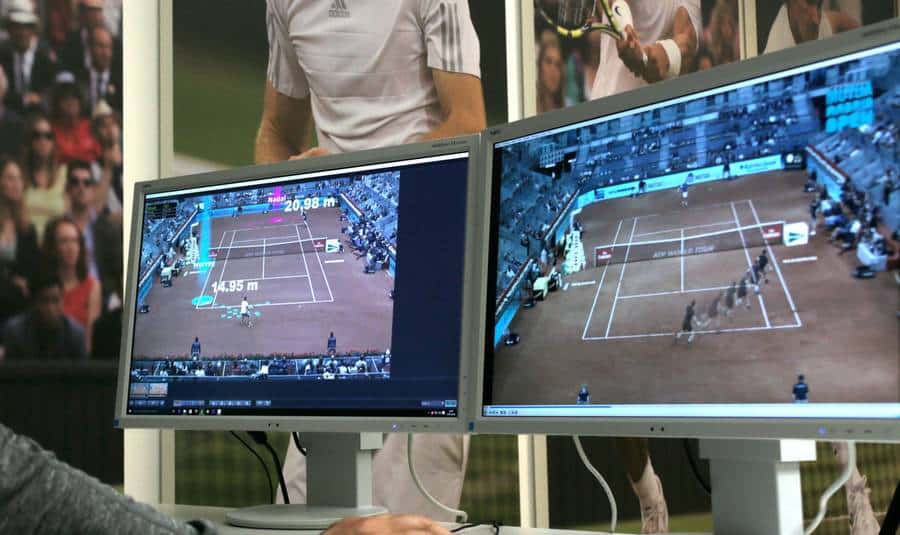
TennisGate
The situation at TennisGate is somewhat different. Instead of training players for a team sport in which they must learn to work together across a large pitch, the focus for a tennis coach is on an individual’s performance on a fairly small court. Furthermore, as a professional-level tennis training company, TennisGate thinks in terms of developing specific, attractive services for clients.
The company organises almost all of their own shoots. Oliver Heuft, TennisGate Managing Director, said, “We usually have a camera behind the court at either end, positioned exactly over the centre line, filming the whole court using wide angle lenses, and at least 4 to 5m high to make sure we have the maximum court area visible for calibration. We also use a Sony FS7 as a slow motion camera, and to zoom in on technical details.
“It’s also important to use a fast shutter to freeze frames and stop motion without motion blur. This is one of our specialities and a major advantage we can offer over broadcast footage.”
As well as training sessions, depending on media rights, TennisGate captures video at the ATP 1000 event, the Mutua Madrid Open, professional practice events and the German tennis Bundesliga, to record the pros as a blueprint for the juniors.
Oliver said, “We also encourage other coaches to send us footage of their players that we then analyse for them as a kind of ‘visual coaching service’, something we are trying to make a part of our portfolio as a service.”
Viz Libero’s graphics tools
TennisGate has also found Viz Libero’s 3D graphics suit their goals for training very well. “We divide whole movement patterns into progressive pictures to help the viewer understand each different movement element better,” said Oliver. “The Virtual run or Strobe run is especially useful to observe the timing of the player’s stroke when hitting the ball on the run, in various directions – forwards, backwards, diagonally or laterally. A recent update to Viz Libero now lets us choose certain pictures during the run and only work with the ones we need, saving a lot of time.”
Highlighting special areas of the court is one of the software’s most useful tools for TennisGate. Especially when combined with the ability to measure distances, it helps visualize tactical patterns and target certain areas, giving the players and coaches more insight into the game and the ‘geometry of the court’.
Oliver said, “Using the 3D-arrow tool, we can depict actual and possible ball trajectories of different shot types, shot heights and shot directions. It’s an excellent way to clarify the relationship between technique (shot production, spin) and tactical patterns and execution in game situations.”
It might seem that, in the close confines of the court with only one player per side, the tracking tools wouldn’t be as useful for tennis as for larger scale team sports. But Oliver said the automatic tracking helps show the running path in long rallies, and the precision of other tracking tools works well for short rallies.
‘Visual Game Analysis’
Currently, similar to VfB Stuttgart, TennisGate is only using Viz Libero in their studio. “But that isn’t set in stone,” Oliver said. “We’ve earned a worldwide reputation as experts in educating coaches and players through Viz Libero clips – we call this service ‘Visual Game Analysis’. Live demos would definitely be a logical next step for us.
“Creating virtual player positions with the Move Player tool, for example, is a valuable option at training locations. Electronically moving a player into the right position, thereby showing the ideal movement path or court position, visually teaches players how to cover the court more effectively. You could also show the incorrect execution of certain steps or movements with the same technique.”
They also would like to increase their skills in using Viz Libero’s virtual cameras function to take better advantage of their two-camera set-up to generate new views from the footage.
High-speed, stop-action
Oliver remarked that none of the training techniques he has described here were possible before adopting Viz Libero, and he is aware of its still untapped potential for TennisGate. Following and tracking the technical development of players is important when comparing players in different developmental stages, for instance. “The technical differences in each phase of the stroke and the key movement patterns must be highlighted, combining high-speed video, stop-action magnifying lens and all drawing tools of Viz Libero,” he said.
“Constant movement, short sprints and many changes of direction are the basic demands of our game. To make the connection between on-court movement and athletic development is a must. My earlier mention of recording the pros as a blueprint for the juniors, and then combining this with training units focusing on those observations, is very easy to do with Viz Libero.”
Understanding the possibilities and learning to use the software significantly changed his own thinking on tennis education and, he suspects, tennis education worldwide. “We are currently building the official education campus for the German Tennis Federation, DTB, the organisation with the highest number of official members and coaches worldwide. The resulting institution will be among the largest of its kind anywhere. Our clips and work with Viz Libero will play an important part in that – in my opinion we’ve only scratched the surface of the software’s potential.”
